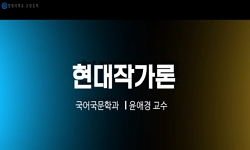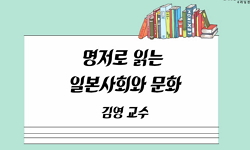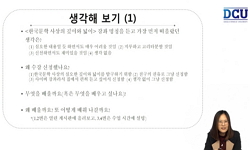본 논문은 淸代 한중 지식인의 만남에서 나타나는 특수한 시대배경에 대해 논하고 있다. 연행록은 조선시대 한중지식인 교류를 기록하고 있는 매우 중요한 기록이다. 특히 중국의 자료에서 ...
http://chineseinput.net/에서 pinyin(병음)방식으로 중국어를 변환할 수 있습니다.
변환된 중국어를 복사하여 사용하시면 됩니다.
- 中文 을 입력하시려면 zhongwen을 입력하시고 space를누르시면됩니다.
- 北京 을 입력하시려면 beijing을 입력하시고 space를 누르시면 됩니다.

청대(淸代) 한중 지식인 교류와 문자옥(文字獄) -『건정동회우록(乾淨동會友錄)』을 중심으로- = Exchanges and Literary inquisition in the age of Qing dynasty between Korean and Chinese intellectuals
한글로보기https://www.riss.kr/link?id=A82332426
- 저자
- 발행기관
- 학술지명
- 권호사항
-
발행연도
2010
-
작성언어
Korean
-
주제어
연행록 ; 건정동회우록 ; 청대 ; 淸代 ; 문자옥 ; 한중지식인 ; Yunhangrok ; Ganjeongdongpildam ; Qing dynasty ; Literary ; inquisition ; Korean and Chinese intellectuals
-
KDC
911.05
-
등재정보
KCI등재
-
자료형태
학술저널
-
수록면
89-121(33쪽)
- DOI식별코드
- 제공처
- 소장기관
-
0
상세조회 -
0
다운로드
부가정보
국문 초록 (Abstract)
본 논문은 淸代 한중 지식인의 만남에서 나타나는 특수한 시대배경에 대해 논하고 있다. 연행록은 조선시대 한중지식인 교류를 기록하고 있는 매우 중요한 기록이다. 특히 중국의 자료에서 보기 힘든 일상생활과 섬세한 만남에 대한 풍부한 자료를 우리에게 제공하고 있다. 이러한 기록을 통해 당시 한중지식인이 매우 다양하고 활발하게 교류했다는 사실을 알 수 있다. 『건정동회우록』에는 한중 지식인의 만남에서 눈물을 흘리는 중국 지식인의 모습이 등장하는데, 이를 두고 일본 학자 후마 스스무는 한국지식인의 태도를 비판한다. 그는 조선 지식인이 너무 성리학에 심취하여 감정을 억제하였기 때문이라고 판단한다. 이 논문은 후마 스스무의 논리전개에 문제가 있다고 판단하여 당시 시대적 배경과 환경을 점검하여 이에 대해 비판한다. 우선 일반적인 만남에서 눈물을 흘리는 것이 일반적인 모습인가를 의문으로 시작하여 대다수 필담으로 진행되었던 한중지식인의 만남에 대해 살펴본다. 당시 지식인의 교류는 만남부터 헤어짐까지 모두 남의 눈을 의식하는데, 심지어 필담을 나눈 종이를 찢어버리는 등 어딘가 어색한 부분이 자주 존재한다. 어떠한 시대적 요소로 인해 한중지식인이 이처럼 어색한 만남을 지속했으며, 이러한 배경이 어떻게 만남에 영향을 주었는지 분석해보고자 한다.
다국어 초록 (Multilingual Abstract)
This research discusses unique background of the times displayed in the meetings among Korean and Chinese intellectuals. Yunhangrok is a very important record that keeps track of exchanges among Korean and Chinese intellectuals. Especially, it provide...
This research discusses unique background of the times displayed in the meetings among Korean and Chinese intellectuals. Yunhangrok is a very important record that keeps track of exchanges among Korean and Chinese intellectuals. Especially, it provides rich materials of daily lives and delicate meetings, which are difficult to be found in Chinese materials. Through this record, it can be found out about the fact that Korean and Chinese intellectuals had exchanged very frequently and variously. Ganjeongdongpildam shows that some Chinese intellectuals had shed tears in a meeting between Korean and Chinese intellectuals and a Japanese scholar, Huma Susumu critiqued the attitudes of Korean intellectuals. He evaluated that Korean intellectuals were so fascinated by neo-Confucianism and thus suppressed their emotions. This study attempts to critique the standpoint of Huma Susumu by checking out the background of the times and situations because it can be said that his way of presenting his logic has some faults. First, this study doubts if there is a common phenomenon to weep tears in a general meeting and examines meetings among Korean and Chinese at that time in which they exchanged conversation by writing. Exchanges at that time presented that the intellectuals were very sensitive to what others think about them during the whole process of greetings and farewells and even very unusual events often appeared such that they torn apart papers through which they exchanged conversation by writing. This research tries to analyze what motivated these kinds of unusual meetings to be continued among Korean and Chinese intellectuals and the way in which this background had influenced their meetings.
동일학술지(권/호) 다른 논문
-
조청 지식인의 우연한 만남과 사적 교류 -이해응의 『계산기정』을 중심으로-
- 한양대학교 동아시아문화연구소
- 이홍식 ( Hong Sik Lee )
- 2010
- KCI등재
-
- 한양대학교 동아시아문화연구소
- 왕진충 ( Zhen Zhong Wang )
- 2010
- KCI등재
-
- 한양대학교 동아시아문화연구소
- 정민 ( Min Jung )
- 2010
- KCI등재
-
연개소문(淵蓋蘇文) 서사의 형성과 전승 경로 -연개소문의 형상과 관련하여-
- 한양대학교 동아시아문화연구소
- 이승수 ( Seung Su Lee )
- 2010
- KCI등재




 KCI
KCI KISS
KISS







